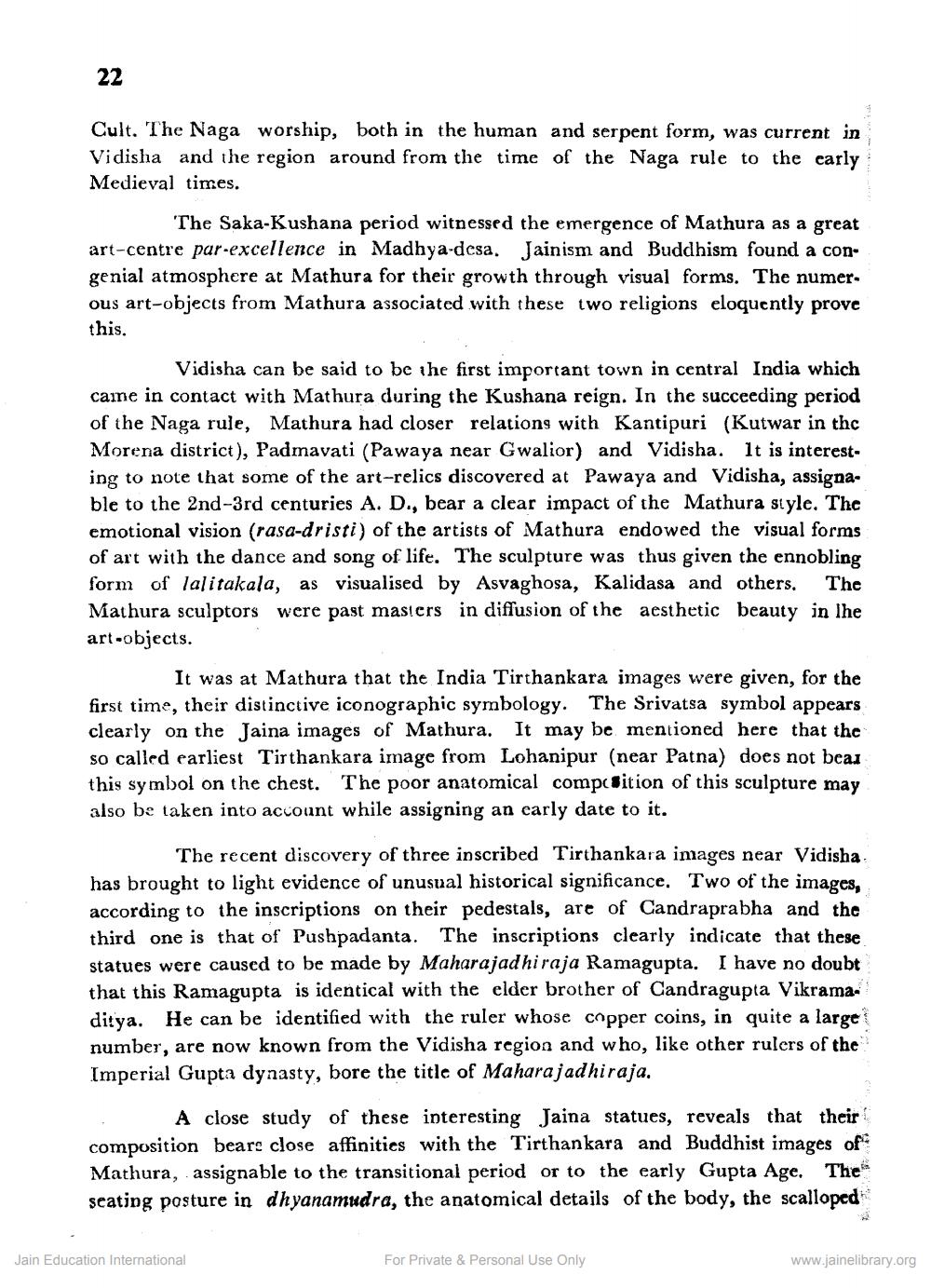________________
22
Cult. The Naga worship, both in the human and serpent form, was current in Vidisha and the region around from the time of the Naga rule to the early Medieval times.
The Saka-Kushana period witnessed the emergence of Mathura as a great art-centre par-excellence in Madhya-desa. Jainism and Buddhism found a congenial atmosphere at Mathura for their growth through visual forms. The numer ous art-objects from Mathura associated with these two religions eloquently prove this.
Vidisha can be said to be the first important town in central India which came in contact with Mathura during the Kushana reign. In the succeeding period of the Naga rule, Mathura had closer relations with Kantipuri (Kutwar in the Morena district), Padmavati (Pawaya near Gwalior) and Vidisha. It is interesting to note that some of the art-relics discovered at Pawaya and Vidisha, assignable to the 2nd-3rd centuries A. D., bear a clear impact of the Mathura style. The emotional vision (rasa-dristi) of the artists of Mathura endowed the visual forms of art with the dance and song of life. The sculpture was thus given the ennobling form of lalitakala, as visualised by Asvaghosa, Kalidasa and others. The Mathura sculptors were past masters in diffusion of the aesthetic beauty in the art-objects.
It was at Mathura that the India Tirthankara images were given, for the first time, their distinctive iconographic symbology. The Srivatsa symbol appears clearly on the Jaina images of Mathura. It may be mentioned here that the so called earliest Tirthankara image from Lohanipur (near Patna) does not bear this symbol on the chest. The poor anatomical composition of this sculpture may also be taken into account while assigning an early date to it.
The recent discovery of three inscribed Tirthankara images near Vidisha. has brought to light evidence of unusual historical significance. Two of the images, according to the inscriptions on their pedestals, are of Candraprabha and the third one is that of Pushpadanta. The inscriptions clearly indicate that these statues were caused to be made by Maharajadhiraja Ramagupta. I have no doubt that this Ramagupta is identical with the elder brother of Candragupta Vikramaditya. He can be identified with the ruler whose copper coins, in quite a large? number, are now known from the Vidisha region and who, like other rulers of the Imperial Gupta dynasty, bore the title of Maharajadhiraja.
A close study of these interesting Jaina statues, reveals that their composition beare close affinities with the Tirthankara and Buddhist images of Mathura, assignable to the transitional period or to the early Gupta Age. The seating posture in dhyanamudra, the anatomical details of the body, the scalloped
Jain Education International
For Private & Personal Use Only
www.jainelibrary.org




